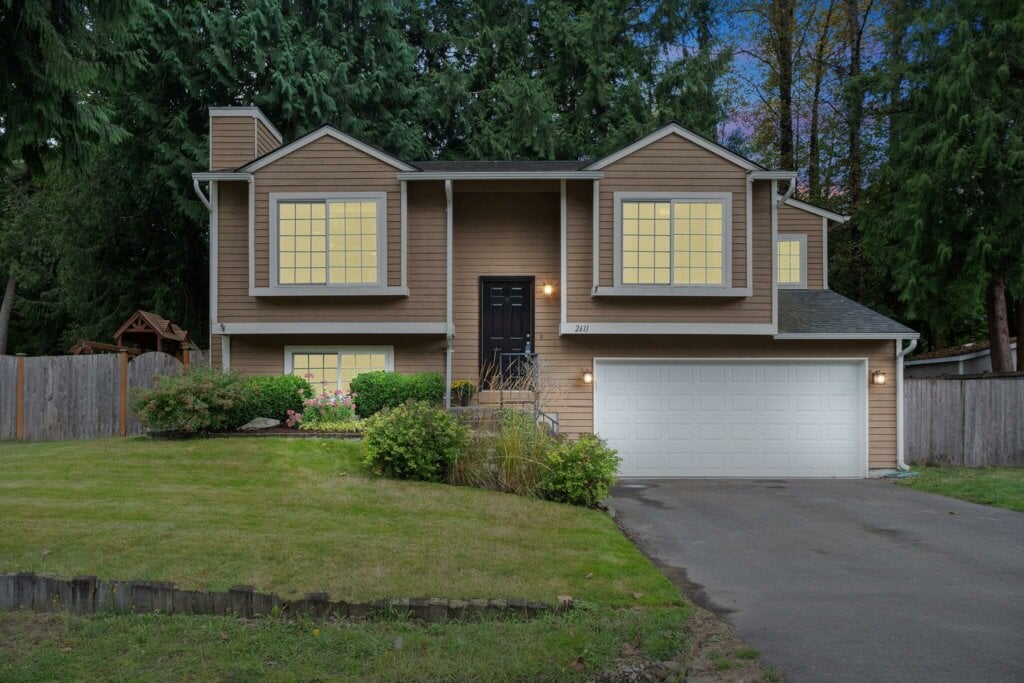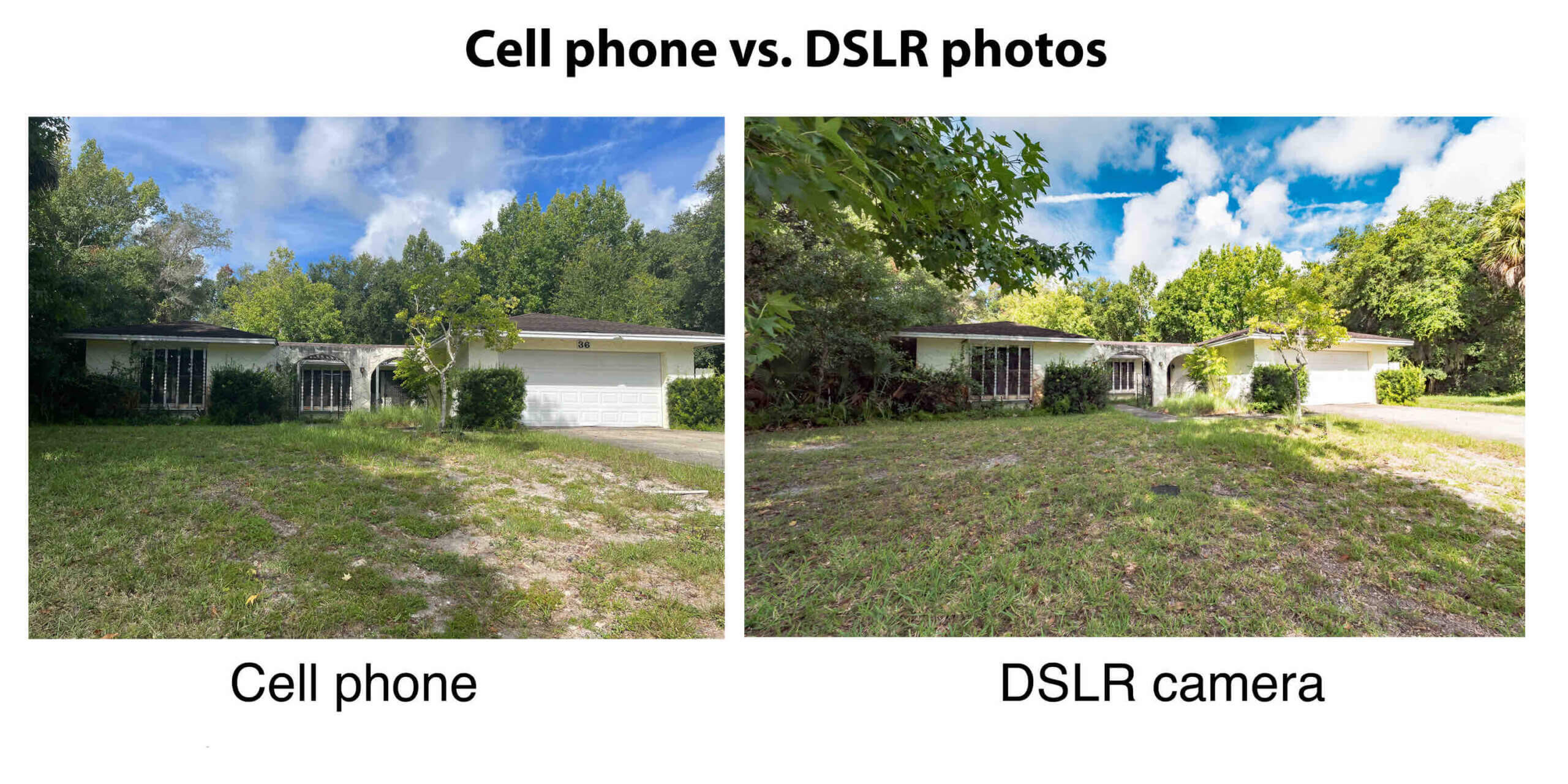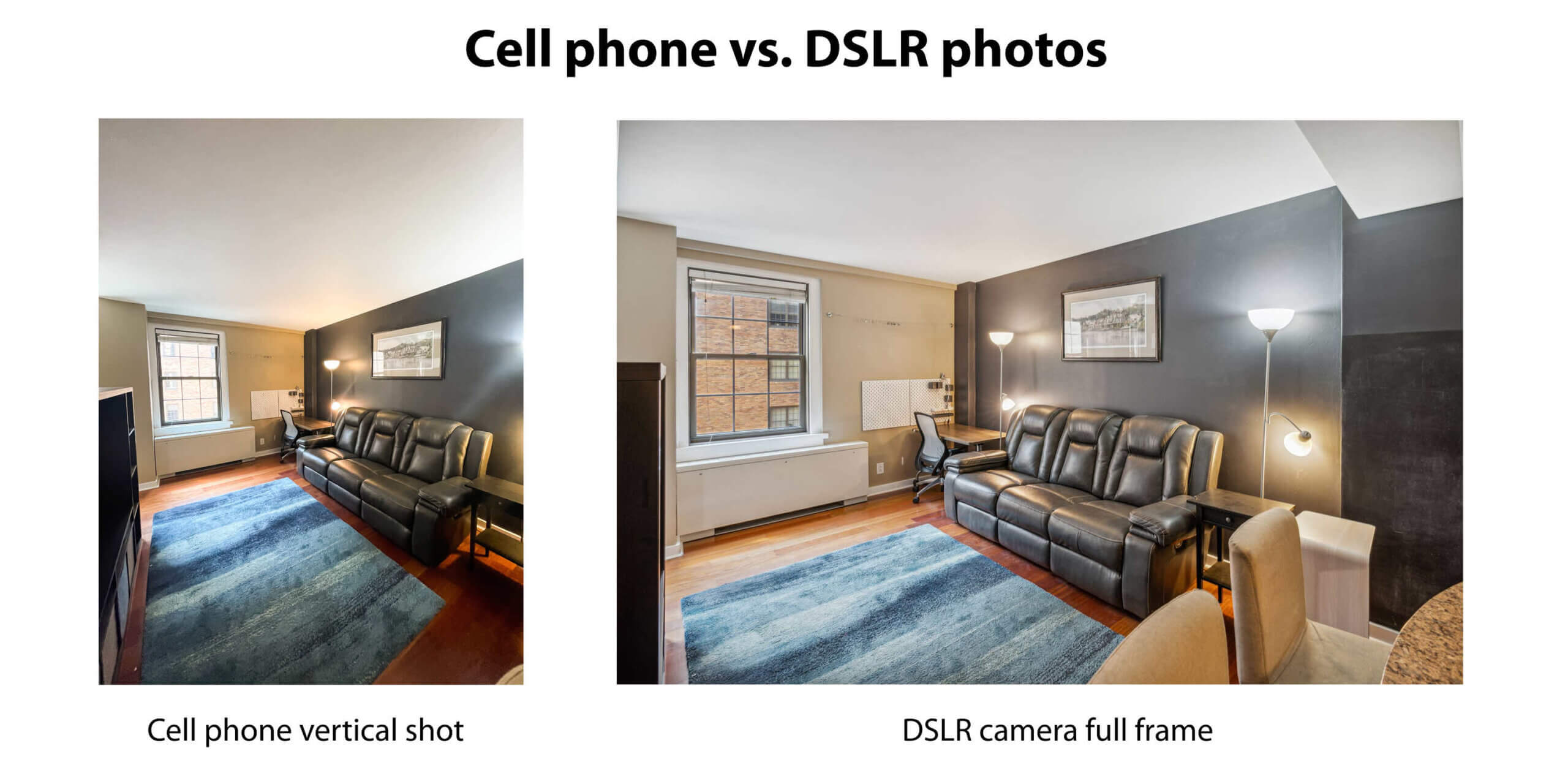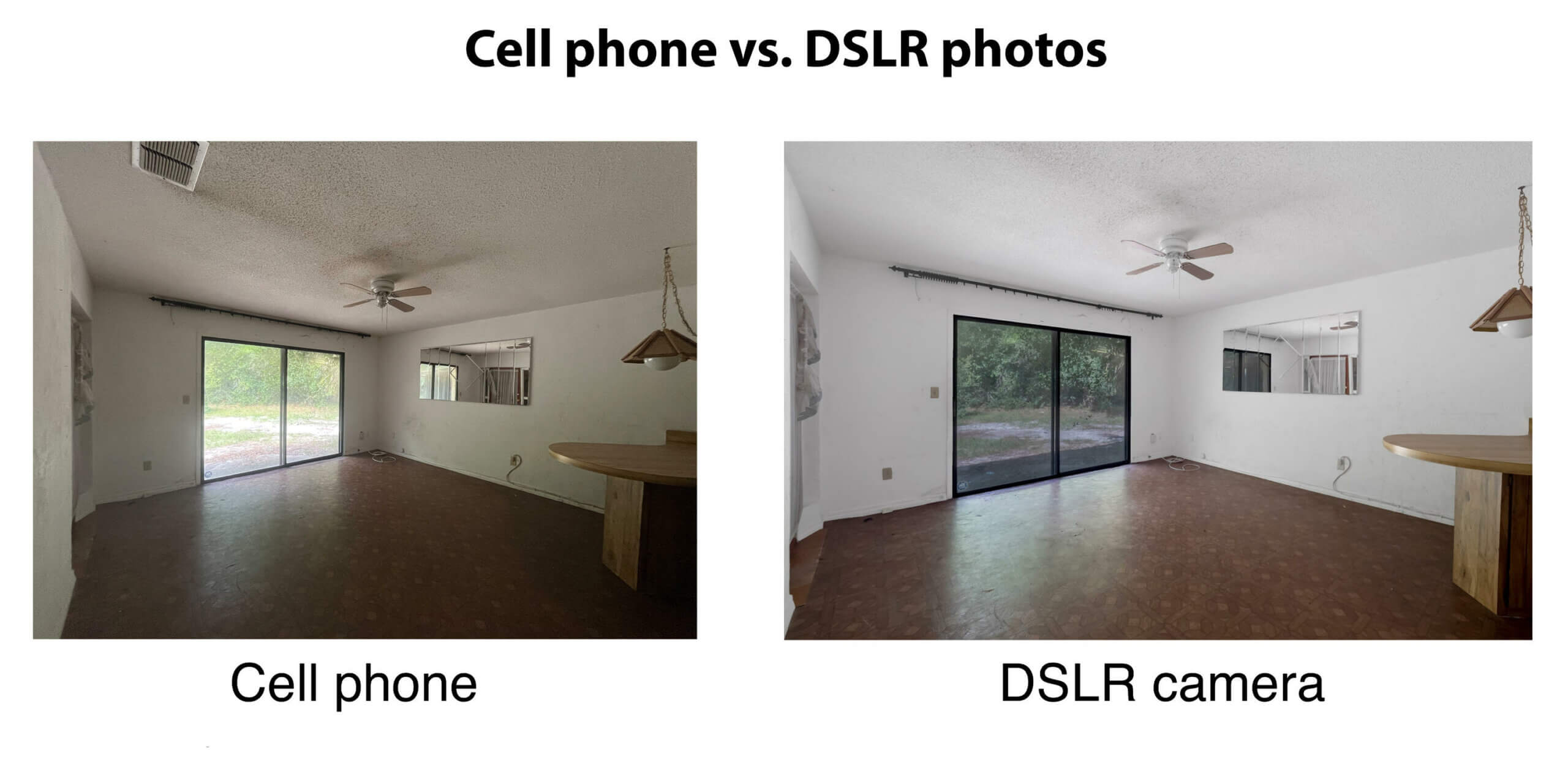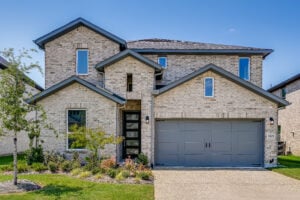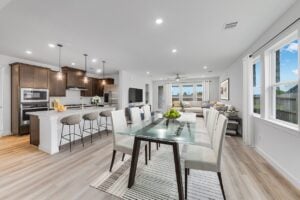Mobile phones today have fantastic built-in cameras for real estate photos. The advancement of camera technology in mobile phones overall has been astounding. They can automatically adjust for contrast, saturation, skin tone, and even background blur to add extra dimension. Moreover, when it comes to dynamic range, the advancement of digital camera technology now can see things we can’t see with human eyes.
Smartphone cameras and auto-editing software are so impressive that it can seem like their photos look as good, if not sometimes better, than those taken with a DSLR (digital single-lens reflect) camera.
Because smartphone cameras are so powerful and deliver such beautiful pictures, some agents are forgoing hiring a professional real estate photographer to shoot their listing photos. However, there are many listing photos your smartphone can’t take.
Still, despite all the significant advancements – including the use of Artificial Intelligence to enhance smartphone photography – mobile phones can’t capture everything that cameras used by professional real estate photographers can. As a result, DSLR – digital single-lens reflex – remains the image champion for real estate photos.
Here are a few examples where professional cameras exceed the capabilities of even the most intelligent smartphone with the most advanced camera:
Full-Frame sensors
Smartphones have tiny sensors. With this technology, size matters.
The leading standard for DSLR cameras is full frame (or 35mm). Additionally, the sensor is one of the most expensive technology in a camera. The larger the sensor, the greater its cost. For example, one of the most popular DSLR cameras for real estate, the Canon 5D Mark IV, has a sensor measuring approximately 36mm x 24mm.
The sensor on a smartphone is around 9mm x 6mm. The result: smaller sensors have a narrower field of view than larger sensors when using lenses of the same focal length.
The disparity of crop sensors physically limits the ability to get the right listing photo shot both inside and outside.
Auto HDR vs. Bracketing
One of the techniques a real estate photographer uses is called bracketing. Bracketing means shooting the same image with different camera settings. The result is multiple variations of the same photo to choose from – or even combine – get that perfect shot. One of the most common type of bracketing is exposure bracketing, taking the same shot with at least three different exposure settings.
A DSLR camera offers manual bracketing, giving far more control over what the final results of what the image will look like. Cell phones are limited to auto HDR in camera, often exporting a JPG image. With bracketing, the photographer can set each exposure exactly for each specific situation, often crucial for real estate photos.
Clarity
Smartphones, because of their smaller sensors, can’t achieve the exact definition and clarity that a DSLR camera can achieve. A great comparison is old school. Think of the difference between an 8 x 10 photo created from a smaller negative versus a larger one. The image would be blurry when enlarged from the smaller negative yet crystal clear when made with the larger negative.
For the sharpest images, smartphones can’t compete. That is the last thing you want when someone is surfing the web looking for homes on their high-resolution screens and seeing anything but crystal-clear images.
Real estate photos on a cloudy day
You can’t control the weather. So, when it comes to shooting real estate photos on a cloudy day, smartphones struggle. However, because you can manually adjust DSLR cameras to the correct settings, the photographer can dial in the correct levels for sensitivity, exposure, and aperture.
When you take that same shot with your smartphone, you trust its computer to do the work in terms of setting the shutter speed, white balance, and the right parts of the image to expose.
That’s why cloudy day photos, for example, that you take with your smartphone, are no match for those taken by a professional photographer with their DSLR camera.
Distance
Have you been on a walk, seen a deer in the distance or a fascinating bird, and whipped out your smartphone to take a shot? It looks crystal clear on your screen, right? So you take the picture, but it is significantly blurred when you look at it closely after the shot.
Think of shooting a house in the same way, from the same distance. Again, when it comes to professionally shot photos, clarity is vital. While a picture may look good on your smartphone, how does it fair on a 32″ 4K computer monitor that a prospective home buyer is using to view it?
Even the best phones with long-range cameras use digital zoom versus “real” optical zoom.
That’s why DSLR cameras excel when it comes to distance shots.
Lens selection
Another massive advantage that DSLR cameras have over a smartphone is lens selection. Smartphones have a lens equivalent to 28mm on a DSLR camera. Some can even mimic a 50mm field of vision used for portrait photography. And some lenses can be attached to your smartphone to enhance its shooting capabilities.
But lens selection for mobile phones is limited and pales compared to the hundreds of lenses available for DSLR cameras. Moreover, lenses give DSLR cameras advantages for almost every kind of photo: long distance shots, wide angle, perspective shots, and more are possible simply by switching out a lens.
Post-production
Smartphone editing software is super slick these days, built in for easy use and making pretty good real estate photos look even better. But what a photographer can do with RAW files from a DSLR camera plus advanced photo editing software like Lightroom and Photoshop makes their excellent work exceptional.
When it comes to post-production advantages, the images that a DSLR camera takes begin with an edge over those taken by a smartphone. Then, add the skills that a professional photographer brings to the post-production process. Once again, DSLR photos are far superior to listing photos taken with a mobile phone.
The eye of a real estate photographer
Beyond the image capabilities and comparisons between what a DSLR camera and a camera on a smartphone can take, the X-factor is the photographer. Professional real estate photographers use DSLR cameras for a reason: it is what they need to get the best listing photos.
How a professional real estate photographer “sees” how to line up a shot and find the right angle or perspective is often learned from years of taking hundreds of real estate photos. There’s no contest when you add the value of having a professional with the right equipment shoot your listing photos.
The right tools for real estate photos
DSLR or mirrorless cameras are not software dependent for exceptional imagery. They use big sensors, big lenses, and big grips and tripods that hold these cameras steady to capture the best photos. The images shot with a DSLR camera still can’t be matched by any smartphone.
The bottom line: DIY with your smartphone is like using the wrong tool from your toolbox when it comes to real estate photos. You hire a professional real estate photographer for their exceptional skills and because they use the proper tools.

